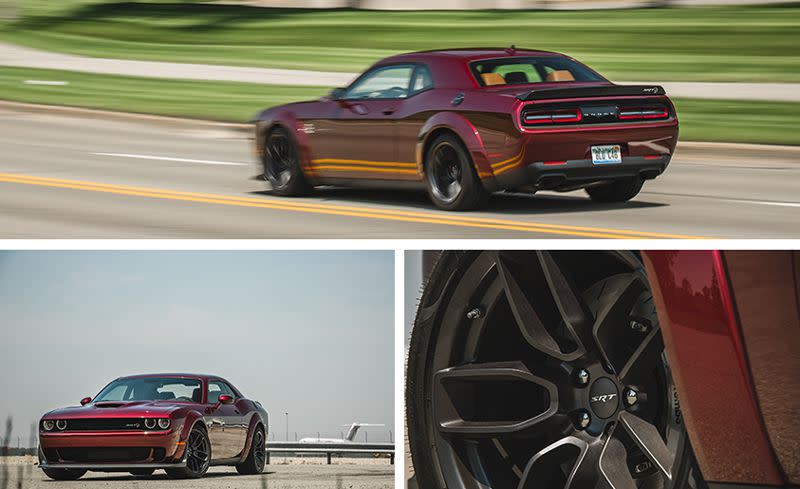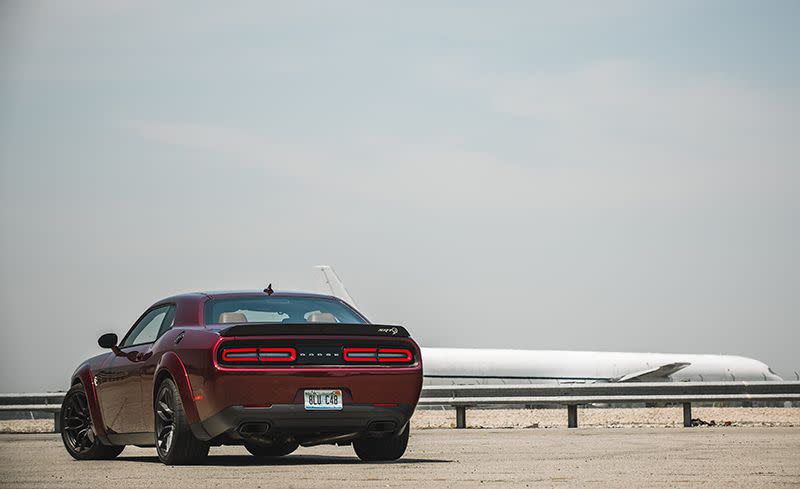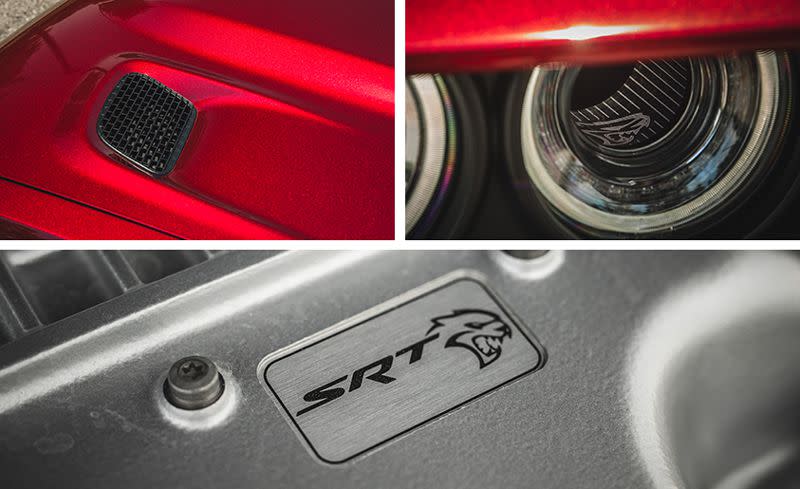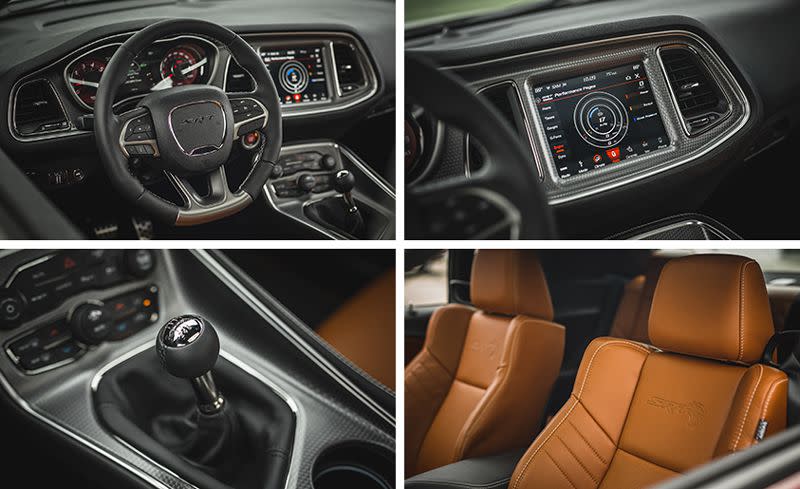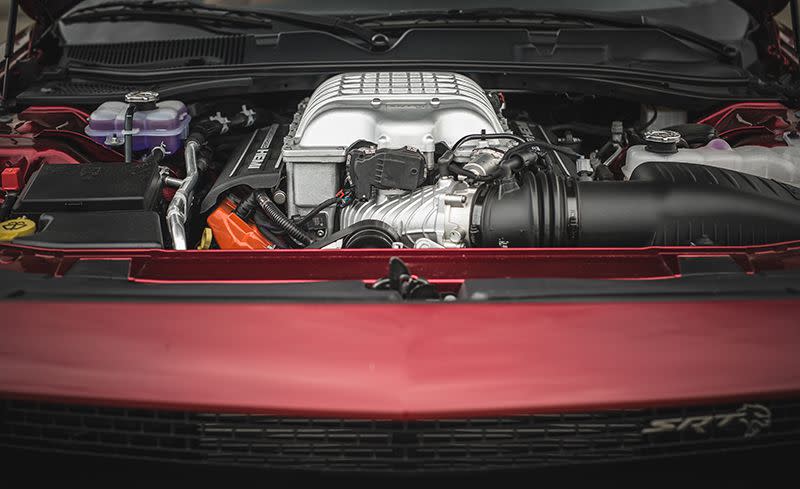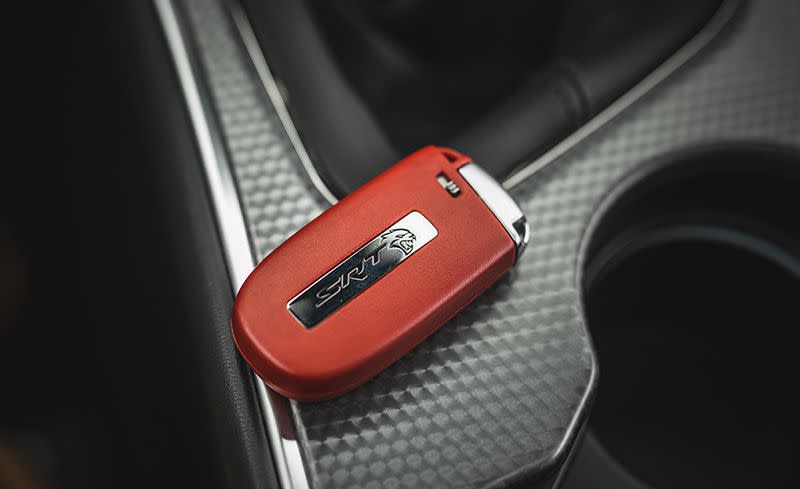2018 Dodge Challenger SRT Hellcat Widebody Manual
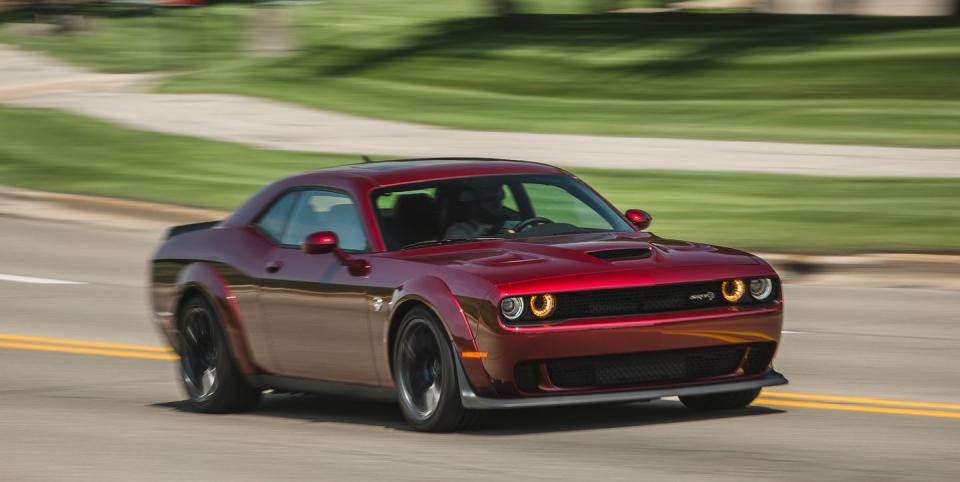
“Traditionalists can still beat the Challenger SRT 392 and the Hellcat engine with a stick,” read Dodge’s press release back in 2014. “The supercharged 6.2-liter Hemi V-8 can be paired with a modified, Viper-sourced six-speed manual transmission . . . ”
Four years later, the Dodge Challenger SRT Hellcat is the second-most-powerful car you can buy in the United States with a manual transmission. Although it’s now outponied by the 2019 Chevrolet Corvette ZR1, the Challenger has a base price that’s not a whole lot more than half that of the $122,000 Corvette. Compared with the ZR1, this 2018 Dodge Challenger SRT Hellcat Widebody-with its more motherly hips, wider tracks, and larger rubber-also looks like a blowout-sale bargain with an as-tested price of $76,525.
Hellcat manuals are good business. From 2015 to 2017, Challenger Hellcat production totaled about 22,000 cars, and Dodge says the take rate for the stick has been 35 percent. So they’re not exactly rare.
For even deeper coverage of the 2018 Dodge Challenger SRT Hellcat, view our Buyer’s Guide in-depth review.
Still Slower Than the Automatic
We tested a manual Hellcat back in 2015 and made a disappointing discovery: The automatic car would put it on the trailer. The manual ran from zero to 60 mph in 3.9 seconds, trailing the automatic by three-tenths. Its quarter-mile performance of 11.9 seconds at 124 mph was 0.2 second and 2 mph slower. “If bragging rights are important (and how are they not with this car?),” we wrote, “the automatic is the one to have.”
That’s still true with the Widebody.
Getting all it can from its rear 20-inch Pirelli P Zero tires, the Challenger Hellcat Widebody automatic hits 60 mph in 3.8 seconds and storms through the quarter in 11.8 seconds at 126 mph. With the manual, however, it’s a 4.0-second run to 60 mph and a 12.4-second quarter-mile at 120 mph. That disappointing performance trails that of the much lighter but less powerful Chevy Camaro ZL1 manual and the Ford Mustang Shelby GT350R. That makes the Shelby, in particular, a bit of a giant killer, since it has the only naturally aspirated V-8 of the bunch and it’s down more than 180 horsepower to the Dodge.
The Hellcat’s portly 4538 pounds is partly to blame here-with the Widebody coming in 69 pounds heavier than the already hefty standard model-but it’s really the tall gearing of the six-speed manual that slows this beast. With a 2.26:1 first, 1.58:1 second, and 1.19:1 third-gear ratio, the Tremec TR-6060 is just no match for the 4.71:1 first, 3.14:1 second, and 2.10:1 third of the optional ZF-supplied 8HP90 eight-speed automatic. And the six-speed’s 3.70:1 rear-axle gear, up from the automatic’s 2.62:1 ratio, just isn’t enough to make up the difference.
You can feel it the first time you nail the gas in first gear. Oh, the Hellcat manual will put you back in the seat and scare the bejesus out of any passengers, but if you just climbed out of the automatic, you’ll wonder if a plug wire has popped loose. The fix is to keep your foot down and throw gears like Dick Landy. The Hellcat gets plenty of tire scratch on the 1-2 upshift, and it’ll chirp those big rear 305s in third.
Considering the Hellcat’s 650 lb-ft of torque, its twin-disc clutch is remarkably light, and its clean pickup makes stop-and-go traffic manageable. The shifter-which is canted forward a few degrees-is well placed, and its action takes just the right amount of muscle, but its throws could be shorter. The ball-shaped shift knob works fine, but this car is crying out for a Pistol Grip shifter. Hurst can solve both of those problems for about $600.
Handles Better Than Its Reputation
So, it’s not the king of the drag strip, but that’s the Challenger Demon’s job description the last time we checked. The Hellcat Widebody manual is a more well-rounded beast with dance moves, impressive braking performance, and plenty of grip.
It generated 0.95 g of grip on the skidpad and stopped from 70 mph in just 154 feet with no fade. These numbers don’t match up to the performance of the Camaro ZL1 or the Shelby, but the skidpad number betters the narrow-body Hellcat’s 0.91 g. The Widebody benefits from a 1.7-inch-wider front track and massive 305/35ZR-20 front tires. Our test car also had the $695 Summer Tire option, which is over and above the $6000 Widebody Performance package.
Despite 56.7 percent of its weight over those front tires, the Hellcat is more fun to push in the hills than expected, with good turn-in and an ability to rotate under braking. It feels big, especially at first, but with practice you can pitch it into corners, rotate the big coupe around the mass of its powertrain, and drive it out on the throttle in a controlled slide.
On tight back roads, its tall second- and third-gear ratios are now exactly what you want, and it’s stupid fun to accelerate out of a second-gear corner right on the edge of traction and charge hard toward the next corner, snatching third just as the big V-8 kisses its 6200-rpm fuel cutoff. Here the fantasy isn’t Dandy Dick but Sam Posey tossing his Sublime 1970 Challenger T/A around Laguna Seca. Just know that the howl of that 6.2-liter can be heard for miles and Johnny Law just may be waiting for you up over that rise. Don’t ask us how we know.
In Sport and Track modes the Hellcat’s precise throttle response, along with its exceptional stability-control system, allows a driver to choose the rates of yaw and tire destruction without feeling as if the car is going to get away from you. Those bold enough can also shut down the system completely. Pedal placement makes heel-and-toe rev matching easy, and the 14.4:1 steering ratio is quick.
Manual Labor Saves Money
Every Challenger SRT Hellcat is subject to the $1700 gas-guzzler tax, but sticking with the manual transmission saves $2995 over the optional automatic. That not only pays off Uncle Sam but leaves $1295 for fuel, which is a good thing since we averaged 12 mpg over 800 miles.
Dodge has already announced its tweaks to the 2019 Challengers. These include a 10-hp increase for the Hellcat and a new model called the Redeye. With technology lifted from the now defunct Demon, that last one will offer 797 horsepower, but like the Demon it will be automatic only. The Hellcat Widebody will remain the hottest Challenger with three pedals. And traditionalists, those who know there’s more to a great car than ultimate acceleration, will continue to beat the Challenger’s Hellcat engine with a stick.
('You Might Also Like',)

 Yahoo Autos
Yahoo Autos 